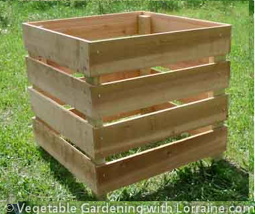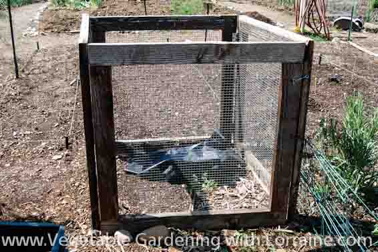 Home & Garden
Home & Garden
 Composting
Composting
Don's Home
 Home & Garden
Home & Garden
 Composting
Composting
|
|
Contents: Overview | How it works | What to do | Commercial Compositors
Overview: How it works: There are two types of composting anaerobic (without air) and arobic (with air). Anaerobic composting requires an entirely different set of organisms and conditions than does aerobic composting. The anaerobic process, which is essentially putrefaction and produces a very acidic environment similar to that in the stomach. Hence the term "digester" used Compositors: Aerated Static Pile:  
In MotherEarthNews tests, tumblers did not produce finished compost any faster than a well-managed compost bin or open pile. Master Composter Barbara Conover says that unless you have a very large pile a bin works better.
Batch (In-vessel) Compositors:
In batch composting, you really need at least 2 bins so that one can be active (where you add new stuff) and one can be closed (where nothing new is added so it can finish decomposing). The one to the right has 'active' and 'finishing' bins and is good for small quantities. Center-axle drums. A vertically mounted drum rotates around a central, horizontal axle supported by a wood, metal or PVC frame. Operation is generally easy, particularly with the models that have doors on both ends. The central axle acts to break up and mix the materials. Most of these tumblers are mounted low to the ground, however, so emptying them can be a chore unless you have a low-boy wheelbarrow that happens to fit under them.
Top-to-Bottom Composters
Composting with Worms: We recommend using only raw fruit and vegetable scraps. Stay away from meats, oils and dairy products, which are more complex materials than fruits and vegetables. Thus, they take longer to break down and can attract pests. Cooked foods are often oily or buttery, which can also attract pests. Avoid orange rinds and other citrus fruits, which are too acidic, and can attract fruit flies. Try to use a variety of materials. We have found the more vegetable matter, the better the worm bin. Stay away from onions and broccoli which tend to have a strong odor. You should use red worms or red wigglers in the worm bin, which can be ordered from a worm farm and mailed to your school.
Liquid that comes off the bottom can be used, but check the difference between Leachate (the raw runoff) and worm tea (brewed with worm castings) at Leachate vs. Worm Compost Tea | Nature's Footprint.
See: Reviews of composters: Compost Tumblers - Compare compost tumbler models Testing Compost Tumblers - MOTHER EARTH NEWS Compost Bins Reviewed Inexpensive compost container Composter Reviews for TOP 5 Composters | PeoplePoweredMachines.com How to Build a Compost Bin | University of Missouri Extension Compost Bins - Reviews at ConsumerSearch
Products: [x, y] = User review x=score, y=reviewers Amazon.com - Epica Stainless Steel Compost Bin 1 Gallon - Indoor Compost Bins Amazon.com : Compost Starter 4 Amazon.com : Achla Designs CA-01 Compost Aerator Links: Urban Compost Tumbler. World's Best Composter for home composters. Compost Tumbler, Compost Bins, Composters & Supplies | Gardener's Supply GreenerChoices.org | Easy composting this fall
|